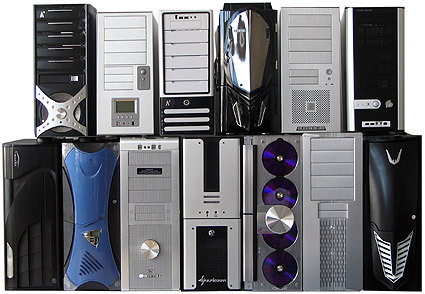Midi Towers: You've Come a Long Way, Baby
Conclusion
The midi tower group at a glance
Midi tower quality has substantially improved recently. While last year we found fault with many that we tested in our last test, this time around we fewer only encountered lesser flaws in workmanship flaws. Sharp edges and corners posing a risk of injury have become rare.
Manufacturers are going in two different directions with regard to materials, opting either for aluminum for a lighter case or for heavy steel.
The Thermalrock and Silverstone models prove that steel does not have to be ugly. At 24.2 lbs (11 kg), these two are still lightweights in their class. Things look different in the aluminum league, with most players weighing in at scarcely 8.8 lbs (4 kg) while offering the same comfort and expansion options as their 33 lbs (15 kg) steel counterparts.
Meanwhile, the front panel door manufacturers are still resorting to cheap plastic parts. Does it have to be this way? THG says no, because plastic not only is cheap, it looks cheap, too. Either go ahead and make a case out of plastic or go with 100% metal. Mixing the two ruins any design.
An additional trend is that a number of manufacturers don't make the basic chassis themselves, employing a standard model instead. The front section layout of extra functions such as fan controls is the only thing left that is subject to individual design. Witness how four of our entrants, Silverstone, Enermax, Thermalrock and Sharkoon faced off in our test using the same basic chassis. The only differences are the features and the front side.
One tendency we've seen for a while now is for some cases to emphasize ornamentation and lighting effects. Less advanced PC users thus now can also acquire a distinctive case too. The motto is: no more boring and dreary-looking PC cases.
Get Tom's Hardware's best news and in-depth reviews, straight to your inbox.

